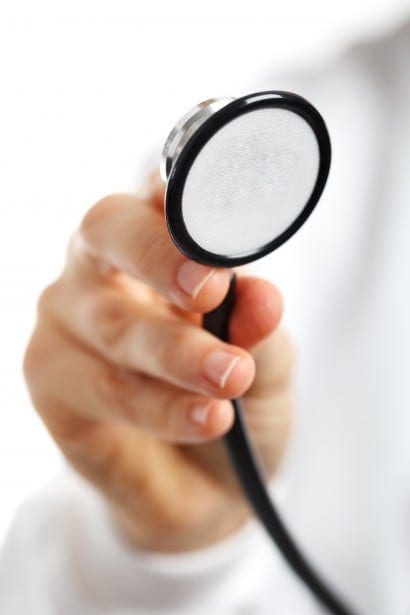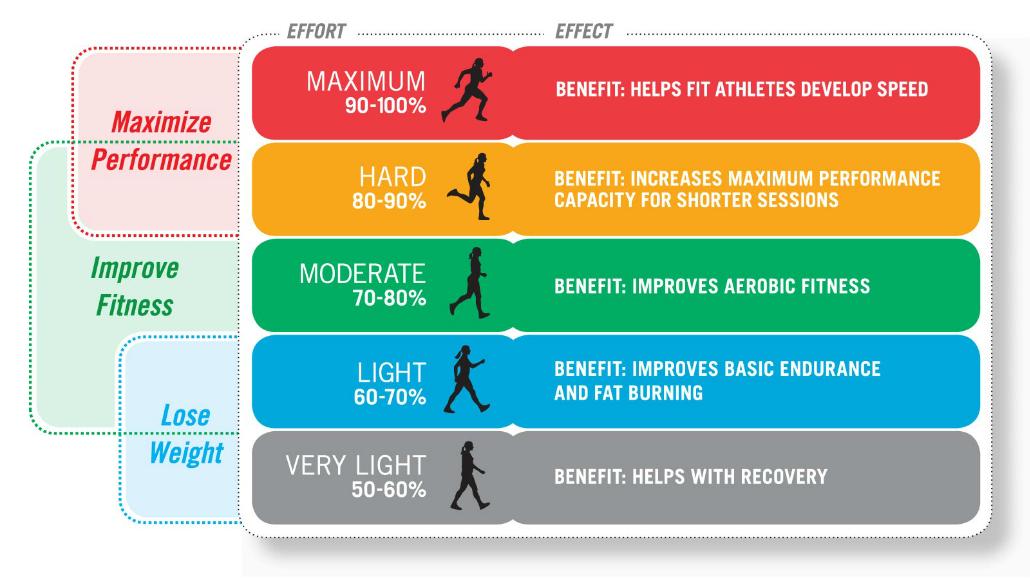

Intensity Rating - Light, very comfortable Weight Loss or Maintenance Zone - 60 to 70% of Maximum Heart Rate.If you are ill, have a heart problem, or are simply trying to get back into shape, this is the perfect zone for you to start at. This range will reduce blood pressure, your risk of heart disease and diabetes, even your cholesterol. Working in this range every day for 30 minutes will get you healthier, but not necessarily more fit. Healthy Heart - 50 to 60 % of Maximum Heart Rate.If you've not exercised for weeks or even months, you might not be wanting to hit 85% of your maximum heart rate straight away! Here are some examples of different target zones based on different fitness levels: Your target zone might also differ depending on how fit you are. Whether your goal is to lose weight, maintain your current weight, or improve your aerobic fitness level, you will reach those goals more quickly when you keep your heart rate within certain target zones. For example, if you count10 beats in 10 seconds, 10X6 = 48 beats per minute (bpm). Count how many beats you feel in 10 seconds, then multiply this by 6. Before you get out of bed in the morning, find your pulse either on your wrist or on the side of your neck using your index and middle finger. To find your resting heart rate, find a watch or clock that has a second hand. A high heart rate can put you at risk of various types of heart disease.

If your BMI is over 35, your GP may advise you on additional options available to support you with losing weight.Your resting heart rate can help you to determine how fit you already are or aren't! The lower your heart rate is when you are doing nothing, the more physically fit you are. Aim to exercise more and eat healthy balanced diet.įor individualised medical and dietary advice consult your GP and Dietitian. You lose weight if the amount of energy coming into your body is less than what is being used up by your body. The good news is that even losing small amounts of weight can benefit your health. It is important that you take steps to reduce your weight. Obese(BMI 30+)Īs your BMI increases, your risk of developing coronary heart disease, diabetes and some cancers increases. For individualised medical and dietary advice consult your GP and Dietitian. Aim to exercise more and eat a healthy balanced diet.

Keeping to a healthy weight will help you control your blood pressure and cholesterol levels. Overweight(BMI 25 to 30)īeing overweight increases your risk of developing coronary heart disease, as well as other health conditions such as diabetes. Some researchers have suggested that a BMI range of 22-26 is acceptable for older Australians. Most adults should be active for 30 minutes on most days.įor older Australians, your general health may be more important than being mildly overweight. But we recommend that you also check your waist measurement.Īim to keep within the ideal weight range by eating a healthy, well-balanced diet and exercising regularly. You are a healthy weight for your height.

If you're concerned about your weight or you are losing weight without trying, talk to your GP and Dietitian to make sure there aren't any other problems causing this. Being in the healthy weight range will improve your body's ability to fight off infection or illness. It's important to aim to keep within your healthy weight range. Changing Exercise and Activity Behaviour.Education Topics for Heart Failure Education.Education Topics For Cardiac Rehabilitation.Medications for Acute Coronary Syndrome.Exercise Training Following a Recent Cardiac Event or Procedure.Exercise Capacity and Functional Testing.Evidence and Principles of Exercise Training.Pathophysiology of Acute Coronary Syndrome and Heart Failure.


 0 kommentar(er)
0 kommentar(er)
